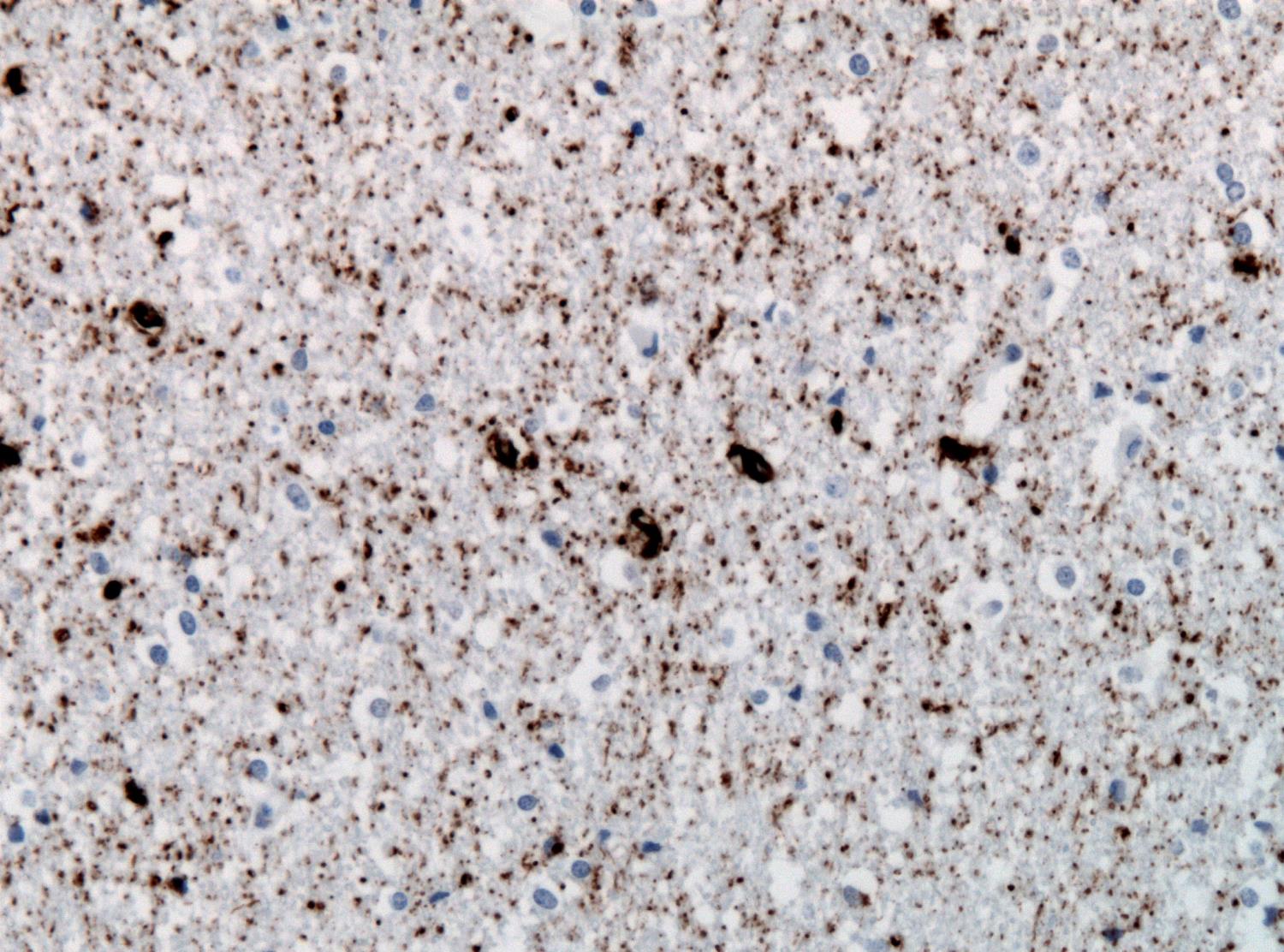 Tau protein buildup in a brain with FTD. Image source
Tau protein buildup in a brain with FTD. Image source
This article is part of series comparing the similarities and differences between ALS and other commonly associated neurodegenerative diseases. For further reading, see our past articles on ALS vs Huntington’s Disease vs Spinal Muscular Atrophy, ALS vs PLS, and ALS vs MS vs Parkinson’s Disease.
Frontotemporal dementia (FTD) and amyotrophic lateral sclerosis (ALS), commonly known as Lou Gehrig’s disease, are two deeply related diseases – in many cases they are even found to be co-occurring. They are both neurogenerative conditions, involving the degeneration and death of cells in the brain. However, they effect different parts of the brain, and have very different symptoms.
What is FTD?
The simplest difference in the symptoms ALS and FTD is that the former affects the movement of the body while the latter affects cognitive function. Like ALS, FTD does not have one cause – one third of cases are known to be related to a genetic mutation, and the causes of others are unknown. In light of this, it is likely a group of related diseases with similar symptoms rather than a single disease, like ALS.
All cases of FTD, however, involve the degeneration of neurons in the areas of the brain behind the forehead (the frontal lobe) and behind the ears (the temporal lobes). These areas are generally associated with personality, behavior, and language. There are two more common forms of the disease: behavior variant FTD (bvFTD) and Primary Progressive Aphasia (PPA).
bvFTD is primarily characterized by changes in behavior and personality, including increasingly inappropriate behavior, loss of empathy and other social skills, and a general lack of inhibition. PPA primarily affects language skills. People with PPA may gradually lose the ability to speak, read, or understand language. There are also some forms of FTD that also feature ALS-like symptoms affecting movement while still not being considered true ALS, but these are relatively rare.
Unlike other common forms of dementia like Alzheimer’s disease, FTD occurs in relatively younger people, often appearing between the ages of 40 and 65. It is the most common cause of dementia in people under 60.
FTD and ALS
While ALS and FTD often occur on their own, about 20% of people with ALS will also develop FTD. The reasons for this co-occurrence are not entirely understood, but we do that some cases of ALS and FTD share similar causes. As in many cases of ALS, most people with FTD show abnormal buildups of the protein TDP-43 in nerve cells. A smaller percentage also show the abnormal presence of the protein fused in sarcoma (FUS). Mutations in the C9orf72 gene are known to be a common cause of inherited FTD, as well as the most common genetic mutation associated with familial ALS.
The presence of both diseases is sometimes referred to as a combined syndrome, and is known by names including ALS-Frontotemporal spectrum disorder or FTD-MND. In most cases, a person will begin displaying symptoms associated with behavioral FTD or, in rarer instances, PPA, and then develop ALS symptoms as the disease continues to progress.
Potential Treatments
Like ALS, there are currently no effective drugs or treatments for FTD. However, there are many investigative treatments for both diseases in clinical trials, and even some that target both diseases. Because they so often co-occur, and sometimes share similar causes and pathology, it is possible that some pathways and targets for treating one disease may also prove effective for the other.
The ALS Therapy Development Institute (ALS TDI) will continue to search for effective treatments and cures for ALS while contributing to science’s overall understanding of the mechanisms of many neurodegenerative diseases, including FTD. In 2023, ALS TDI began a collaboration with Corsalex, a biotech firm specializing in therapies for C9orf72 spectrum disorders including ALS and FTD, to test and validate their discoveries in our own labs.
What to Do Next: